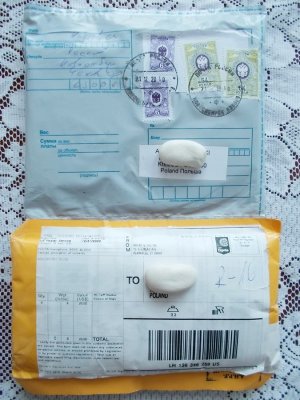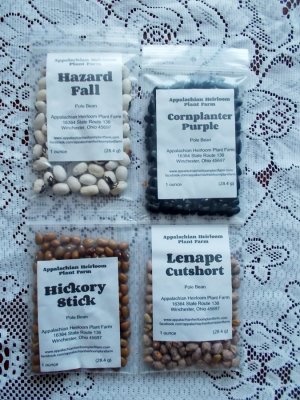Ridgerunner
Garden Master
- Joined
- Mar 20, 2009
- Messages
- 8,241
- Reaction score
- 10,112
- Points
- 397
- Location
- Southeast Louisiana Zone 9A
@BeanWonderin
Speaking of fixing nitrogen, have any of you found that innoculant is beneficial or not?
I've tried inoculant. They are right, you need the type specific to the beans you are growing so be a bit careful there.
From what I've read inoculant does not fix all the nitrogen the bean needs to grow so don't 100% depend on the inoculant for nitrogen. You may need to "fertilize" in some other way also. But it will fix a fair amount of nitrogen. Like many nutrients, nitrogen can leach away, especially in a sandy soil. Water dissolves or absorbs nitrogen, not sure which is the right word, so when the water drains away it catties some nitrogen with it. Having a steady supply of nitrogen could be considered good. My soil is very sandy. That's a big reason I wait until pretty close to planting time to add a lot of compost, to keep the different nutrients from leaching out.
What kind of results did I get? I really did not notice a lot of difference. The beans did well, I did see a lot of the nitrogen-fixing nodes on the roots. But how much of them doing well was the result of the inoculant and how much was related to other things I don't know. I did not do the experiment of half the beans of each variety getting the inoculant and half not. I'm sure it did not hurt them. There are so many different things that affect how a crop produces it's hard to be sure how much something helps.
I used it in new raised beds. I'm sure the bacteria was not present to start with. When I grew beans in those beds the next year in the beds that had inoculant the previous year again they produced the nodes on the roots so it did overwinter down here in my mild winters. The beds that had not been inoculated did not produce those nodes. So when I pulled the beans out when clearing the beds any bean roots that had the nodes were scattered in all the beds so I could seed that bacteria in them.
I think having those nitrogen fixing bacteria is like a lot of what we do. It's not a miracle worker which guarantees total success, but it helps. It helps the beans grow that year and it helps fix nitrogen in the soil. I'd prefer to have it than to not have it.
Speaking of fixing nitrogen, have any of you found that innoculant is beneficial or not?
I've tried inoculant. They are right, you need the type specific to the beans you are growing so be a bit careful there.
From what I've read inoculant does not fix all the nitrogen the bean needs to grow so don't 100% depend on the inoculant for nitrogen. You may need to "fertilize" in some other way also. But it will fix a fair amount of nitrogen. Like many nutrients, nitrogen can leach away, especially in a sandy soil. Water dissolves or absorbs nitrogen, not sure which is the right word, so when the water drains away it catties some nitrogen with it. Having a steady supply of nitrogen could be considered good. My soil is very sandy. That's a big reason I wait until pretty close to planting time to add a lot of compost, to keep the different nutrients from leaching out.
What kind of results did I get? I really did not notice a lot of difference. The beans did well, I did see a lot of the nitrogen-fixing nodes on the roots. But how much of them doing well was the result of the inoculant and how much was related to other things I don't know. I did not do the experiment of half the beans of each variety getting the inoculant and half not. I'm sure it did not hurt them. There are so many different things that affect how a crop produces it's hard to be sure how much something helps.
I used it in new raised beds. I'm sure the bacteria was not present to start with. When I grew beans in those beds the next year in the beds that had inoculant the previous year again they produced the nodes on the roots so it did overwinter down here in my mild winters. The beds that had not been inoculated did not produce those nodes. So when I pulled the beans out when clearing the beds any bean roots that had the nodes were scattered in all the beds so I could seed that bacteria in them.
I think having those nitrogen fixing bacteria is like a lot of what we do. It's not a miracle worker which guarantees total success, but it helps. It helps the beans grow that year and it helps fix nitrogen in the soil. I'd prefer to have it than to not have it.


